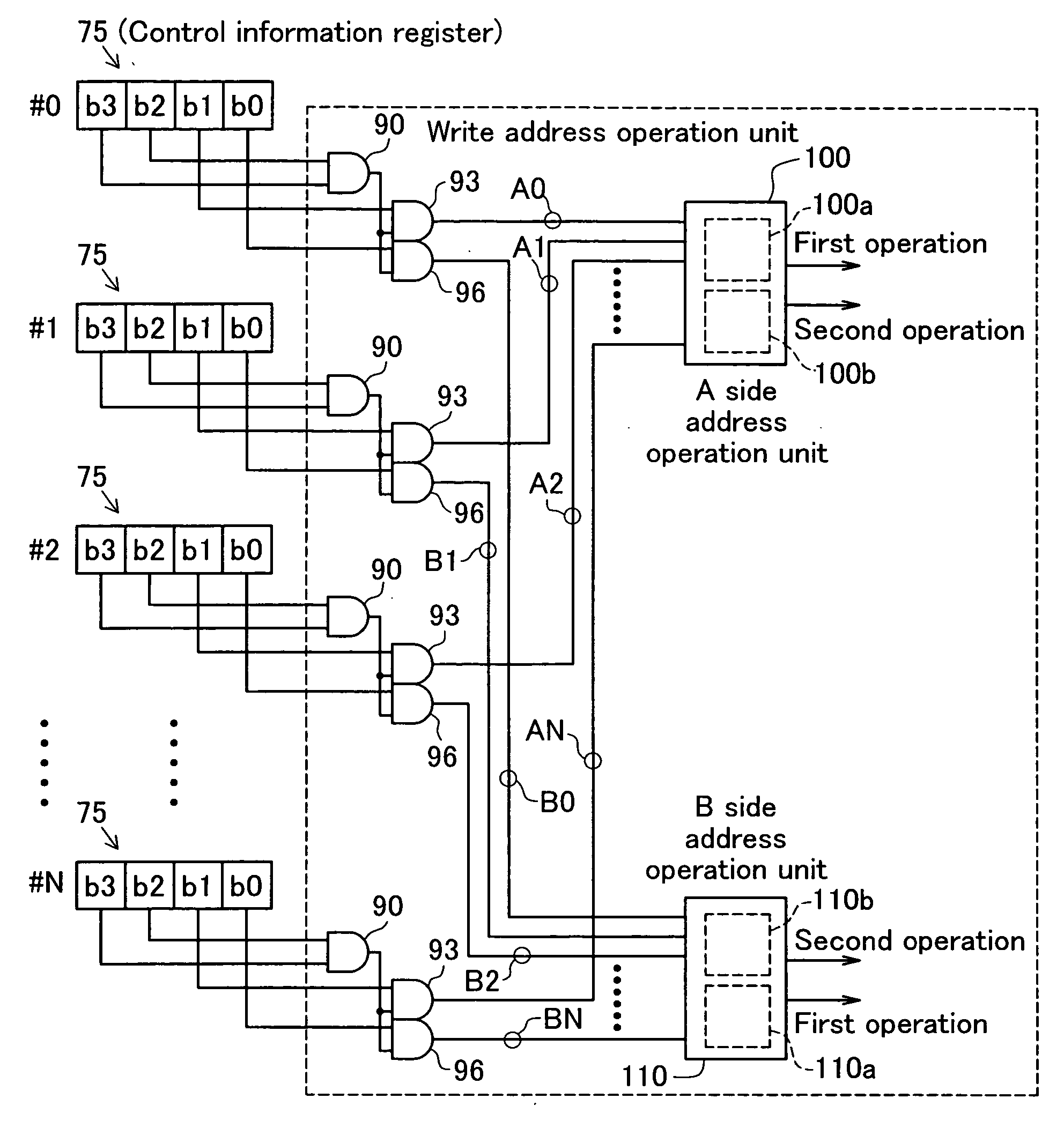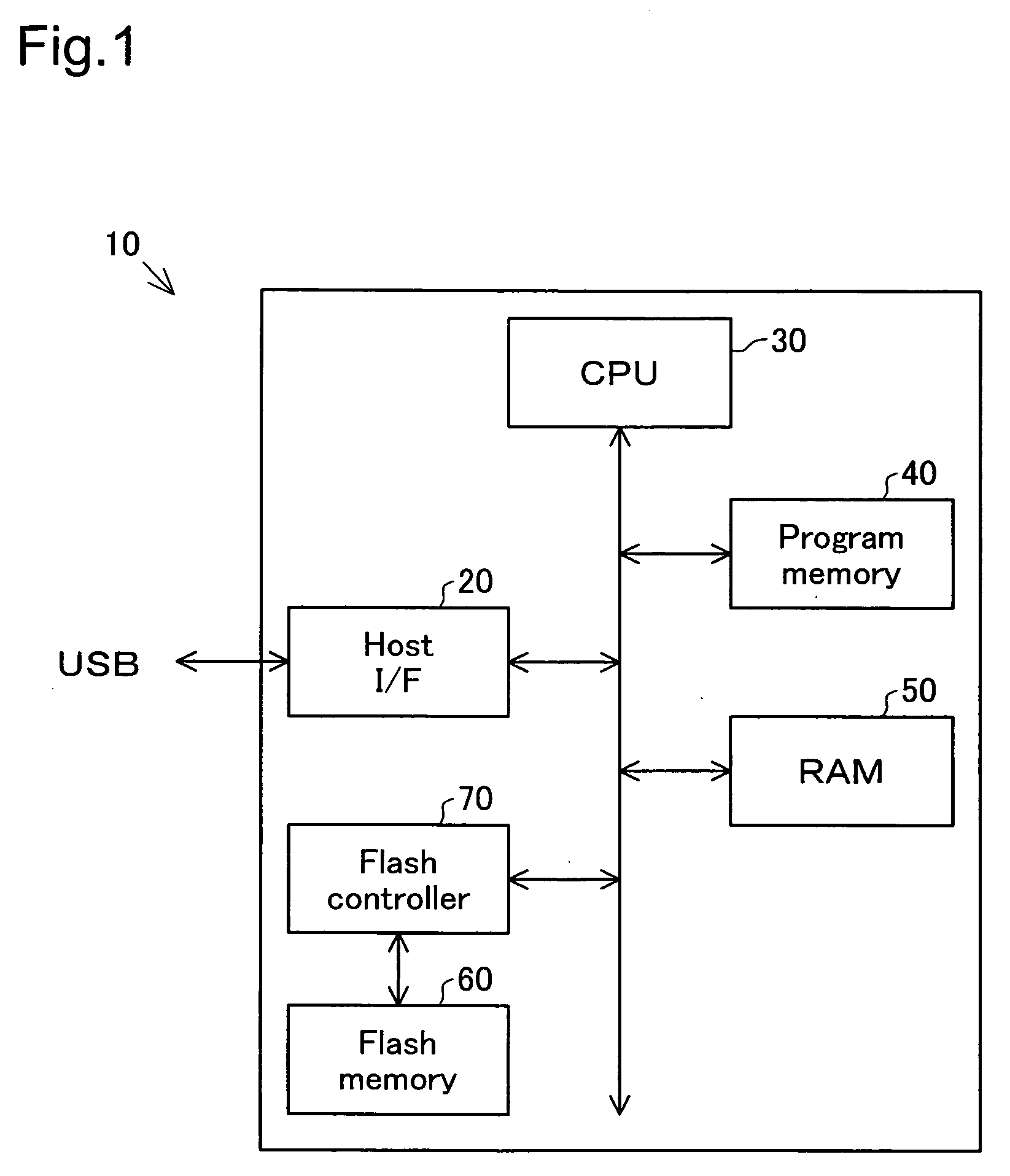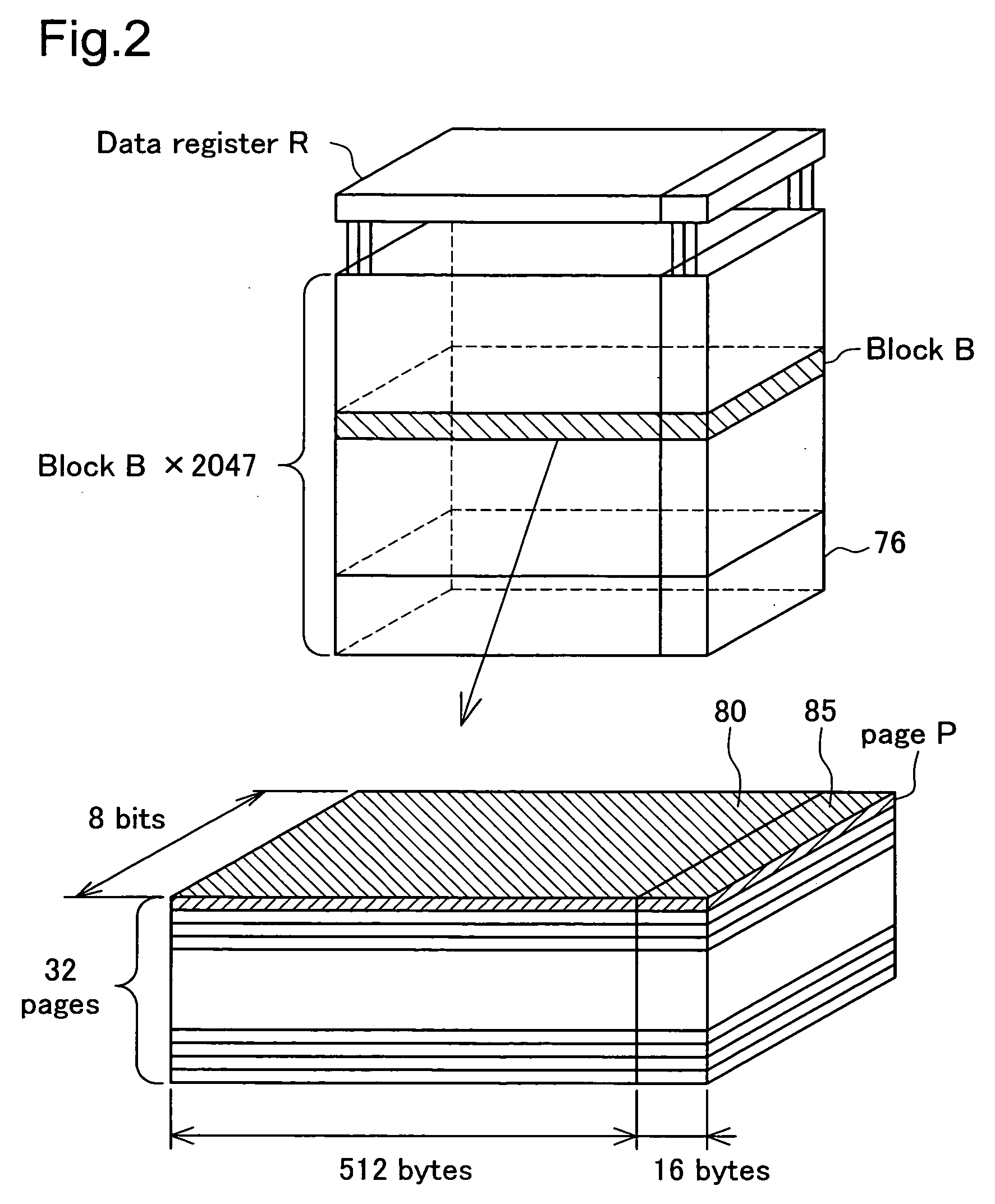External storage device
- Summary
- Abstract
- Description
- Claims
- Application Information
AI Technical Summary
Benefits of technology
Problems solved by technology
Method used
Image
Examples
Embodiment Construction
[0035] Following, aspects of implementing the present invention are described based on embodiments in the following order. [0036] A. Schematic Structure of External Storage Device: [0037] B. Write Block Leveling Process: [0038] (B-1) First Operation Circuit: [0039] (B-2) Second Operation Circuit: [0040] (B-3) Block Identification Circuit: [0041] (B-4) Example of Leveling Circuit: [0042] C. Data Access Processing: [0043] D. Variation Examples:
A. SCHEMATIC STRUCTURE OF EXTERNAL STORAGE DEVICE
[0044]FIG. 1 is an overall block diagram showing the constitution of the external storage device 10 as the first embodiment of the present invention. As shown in the drawing, this external storage device 10 comprises a host interface 210 for exchange data with external devices, a CPU 30, a program memory 40, a RAM 50, a flash memory 60 for doing non-volatile storage of data from outside, a flash controller 70 for controlling reading of data to the flash memory 60, and the like.
[0045] The host i...
PUM
 Login to View More
Login to View More Abstract
Description
Claims
Application Information
 Login to View More
Login to View More - R&D
- Intellectual Property
- Life Sciences
- Materials
- Tech Scout
- Unparalleled Data Quality
- Higher Quality Content
- 60% Fewer Hallucinations
Browse by: Latest US Patents, China's latest patents, Technical Efficacy Thesaurus, Application Domain, Technology Topic, Popular Technical Reports.
© 2025 PatSnap. All rights reserved.Legal|Privacy policy|Modern Slavery Act Transparency Statement|Sitemap|About US| Contact US: help@patsnap.com



